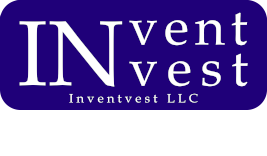
How to Tell if Your Patent is Being Infringed
As an engineer, I occasionally find myself dealing with legal issues and giving an opinion on various designs and processes. Once in a while I need to look at patents and their defense or prosecution. I really didn’t have any idea how to tell if a patent had been infringed, so I asked my good friend and patent attorney for guidance. After all, he hears the question “Is my patent being infringed” almost every day.
Rick is one of the partners here at Inventvest, LLC. He is a practicing intellectual property attorney. One of the properties listed on Inventvest is a lighted floor, so I asked Rick, “How would I know if an existing product or process was infringing this patent?”
Rick’s response was detailed and clear, as usual. I will provide my layman’s understanding of our conversation. Please keep in mind this is not legal advice and it is simply my understanding of our conversation. First of all, he explained, it is important to understand that the patent system is set up to encourage innovation. To that end it is inclusive and not exclusive. This means ideas may be patentable even if the idea involves a product that infringes a prior patent. These are often “improvement” patents. So even if a product is patented, that does not mean that it does not infringe an earlier patent. To many of us trying to get a patent, this may seem to contradict our experience. I know it is not what I have experienced. Given that, the next thing to do in determining infringement is to dissect your independent claim(s).
Using the lighted floor patent on Inventvest LLC as an example:
The 1st independent claim states:
- A floor assembly comprising: a top forming at least a portion of a floor surface and having at least one light emitting portion; at least one light source disposed below said light emitting portion and coupled with said at least one light emitting portion; and said light emitting portion comprising a light refracting portion, to direct light from the light source at multiple angles.
Rick dissected it this way:
The way to determine infringement is to look at every word in the claim (except the preamble most of the time). So, in [this] claim, you can break it down into clauses or elements:
1) a top forming at least a portion of a floor surface (here the top of our fixture has to form a portion of a floor)
2) and having at least one light emitting portion;
3) at least one light source disposed below said light emitting portion and coupled with said at least one light emitting portion;
4) and said light emitting portion comprising a light refracting portion, to direct light from the light source at multiple angles.
Then each element of the claim must be present either literally (exactly as stated) or by substantial equivalent in the accused product. Equivalents are tough to prove, but an equivalent under the law is defined as something that does substantially the same thing in substantially the say way to obtain substantially the same result. Now you might ask what does ‘substantially’ mean? Well, whatever the judge or jury says it means in any case! On the flip side in order to invalidate the claim, you have to show either a single reference that discloses the complete claimed invention as it is set forth in the claim (anticipation) or you can show by either one or more references in combination that the claimed invention is obvious. Much like substantially, obviousness is whatever the judge or jury says is obvious.
In the events leading up to this discussion, I wanted to know if a particular product was infringing this patent. The product was not a floor, but rather a light source in a ceiling. Rick was clear in #1 “(here the top of our fixture has to form a portion of a floor)”.
Once Rick had broken down the independent claim into its elemental clauses it was pretty clear how to determine products that would be infringing this patent. Armed with this technique, Inventvest could accurately identify products that should get a license.
We hope this helps you, as an inventor, to understand both your existing patents, their strengths and limitations, and how to make sure your future patents protect what you need protected.

Inventvest, LLC
